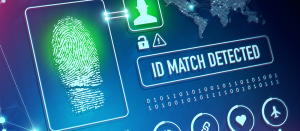The last election cycle was a roller coaster. In addition to many tightly contested races, there was a great deal of talk about voter fraud. As far as we know today, there was no voter fraud committed in the 2018 mid-term elections, despite some claims to the contrary in Florida and Arizona. But even the prospect of voter fraud can be dangerous, as it calls into question the legitimacy of the entire process.
Despite reassurances that voter fraud is extremely difficult to pull off in the U.S., elections fraud is still a growing concern. Earlier this year, Sen. Patrick Leahy (D-Vt.) introduced legislation that would fund grant programs to enhance state election security with biometric-based systems in upcoming elections. The legislation would have allocated $250 million in federal funding states could use to replace outdated and insecure voting machines, upgrade voter registration software and fund other initiatives related to election security. The legislation was ultimately defeated.
It is unfortunate that Leahy’s legislation was defeated because implementing biometric-based systems to help securely identify and authenticate election workers, grant access to voting machines, and to uniquely identify an individual when they show up to vote is better than just a good idea. It’s crucial. Those extra security measures could put to rest concerns about fraud and help voters feel more at ease.
Despite the lack of additional funds from Congress, some places are beginning to adopt biometrics for use in the elections process. For example, in the last election cycle, two County Election Boards in Florida used fingerprint readers to enhance the security of the identification and authentication process for staff members and volunteers involved in managing the voting process. And in October, a Hungarian security company introduced a new biometric voting solution that uses palm vein recognition. It’s unclear yet where or when the solution will be used, though some U.S. counties have reportedly shown interest in it.
Meanwhile, the use of biometrics in elections appears to be catching on faster in countries outside the U.S. Last fall, 150,000 Optical Fingerprint Modules were delivered to Bangladesh for use in electronic voting machines to curb voter fraud and election rigging in the country’s general election. According to Biometric Update, the fingerprinting is mandatory for voters and for electronic voting machine operators who must also provide a unique password and fingerprint to access an electronic voting machine. And in Afghanistan, the Independent Election Commission recently purchased 22,000 biometric capture devices, which were used to verify the identities of voters in that country’s national elections, according to TOLOnews. The devices used there correlated with voters’ address, voter registration, citizenship status, and voter eligibility status to quickly tell the polling staff if a person was eligible to vote and had not already voted elsewhere.
Of course, there is opposition to biometrics in the voting process. Some say the use of biometrics creates concerns over voter privacy and government use of personal data. And there are costs to these systems, so the expenses involved in purchasing and maintaining them can be roadblocks if federal or other types of funding aren’t available.
But if a biometric system is well designed, properly protected and used correctly, it could provide several benefits. Not only could it help make the entire process more secure and help quell concerns about voter fraud, but it could also speed up the voting process, allowing more people to vote without waiting in long lines for elections staff to verify their identities. According to the United States Elections Project, voter turnout in 2018 reached the highest level of any midterm election in a century, with 49.3 percent of the voting-eligible population turning out to vote this year. Still, that’s less than half of the voting-eligible population. Just think what we could accomplish if that number was 80 percent!





